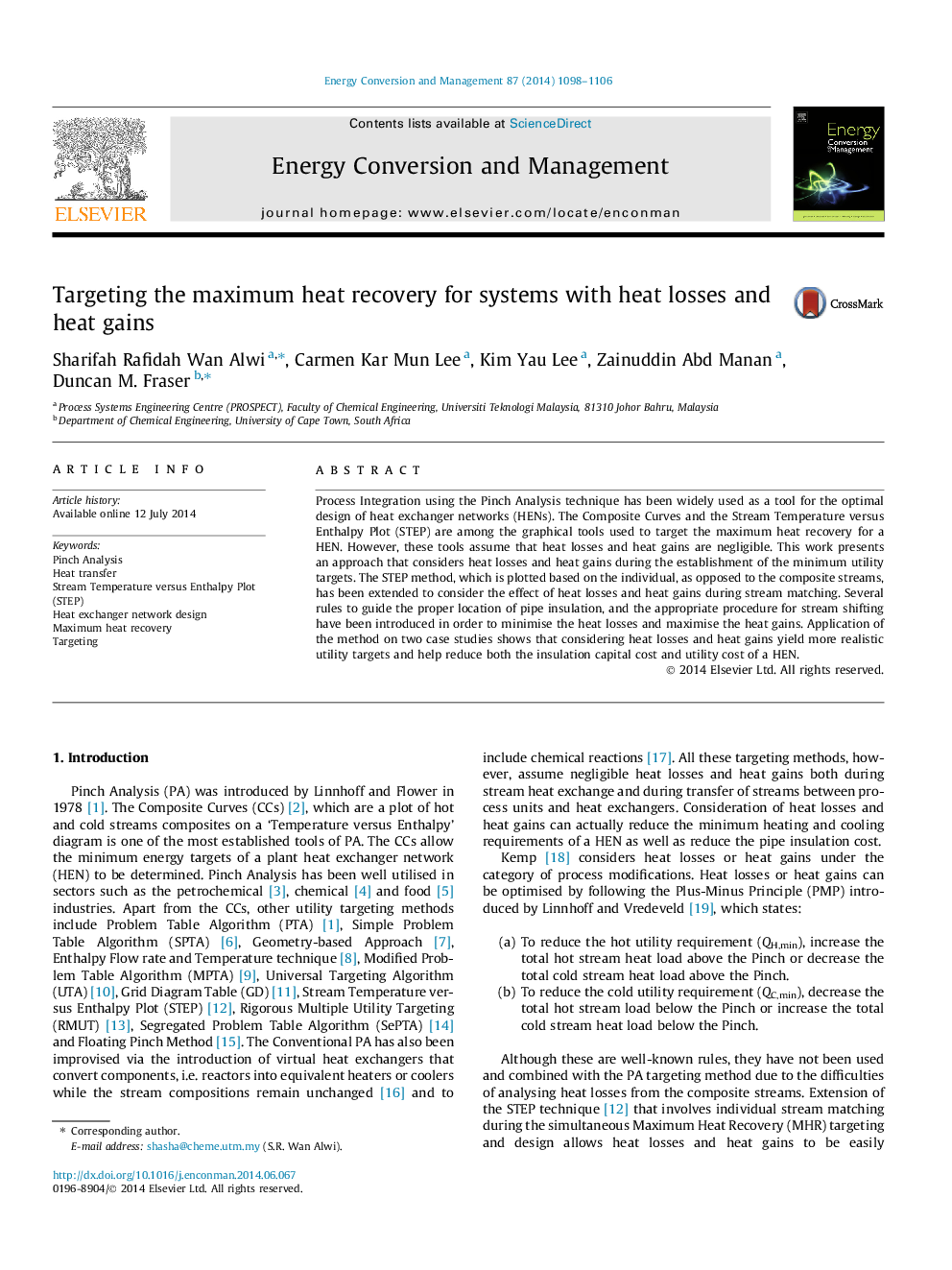| Article ID | Journal | Published Year | Pages | File Type |
|---|---|---|---|---|
| 760630 | Energy Conversion and Management | 2014 | 9 Pages |
•Maximising energy savings through heat losses or gains.•Identifying location where insulation can be avoided.•Heuristics to maximise heat losses or gains.•Targeting heat losses or gains using the extended STEP technique and HEAT diagram.
Process Integration using the Pinch Analysis technique has been widely used as a tool for the optimal design of heat exchanger networks (HENs). The Composite Curves and the Stream Temperature versus Enthalpy Plot (STEP) are among the graphical tools used to target the maximum heat recovery for a HEN. However, these tools assume that heat losses and heat gains are negligible. This work presents an approach that considers heat losses and heat gains during the establishment of the minimum utility targets. The STEP method, which is plotted based on the individual, as opposed to the composite streams, has been extended to consider the effect of heat losses and heat gains during stream matching. Several rules to guide the proper location of pipe insulation, and the appropriate procedure for stream shifting have been introduced in order to minimise the heat losses and maximise the heat gains. Application of the method on two case studies shows that considering heat losses and heat gains yield more realistic utility targets and help reduce both the insulation capital cost and utility cost of a HEN.
Graphical abstractIllustration of heat gains and losses from process streams.Figure optionsDownload full-size imageDownload as PowerPoint slide
